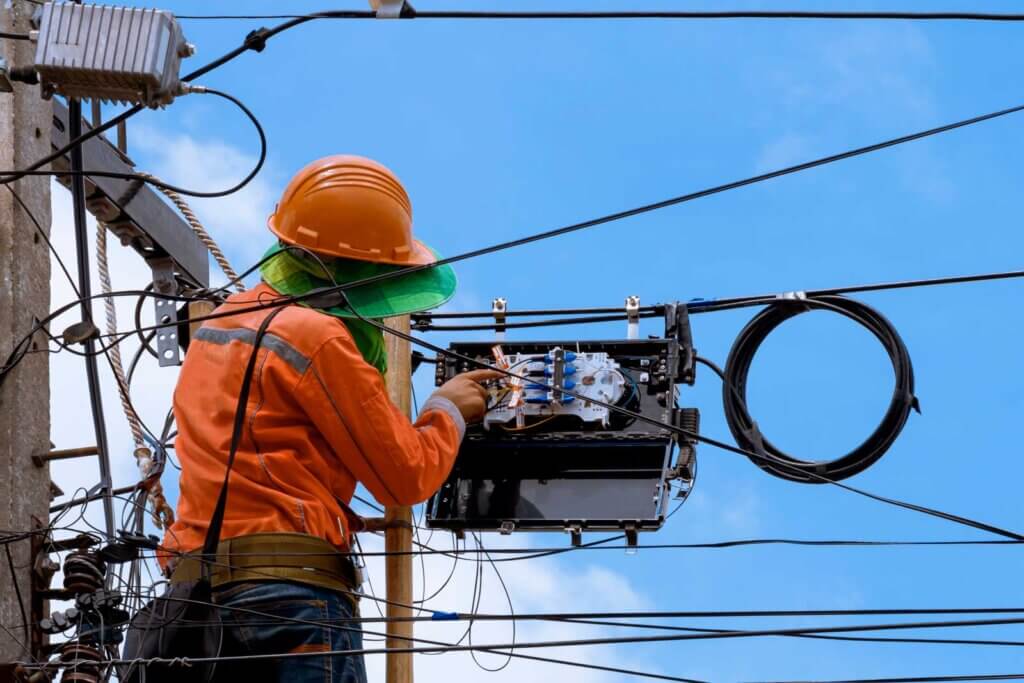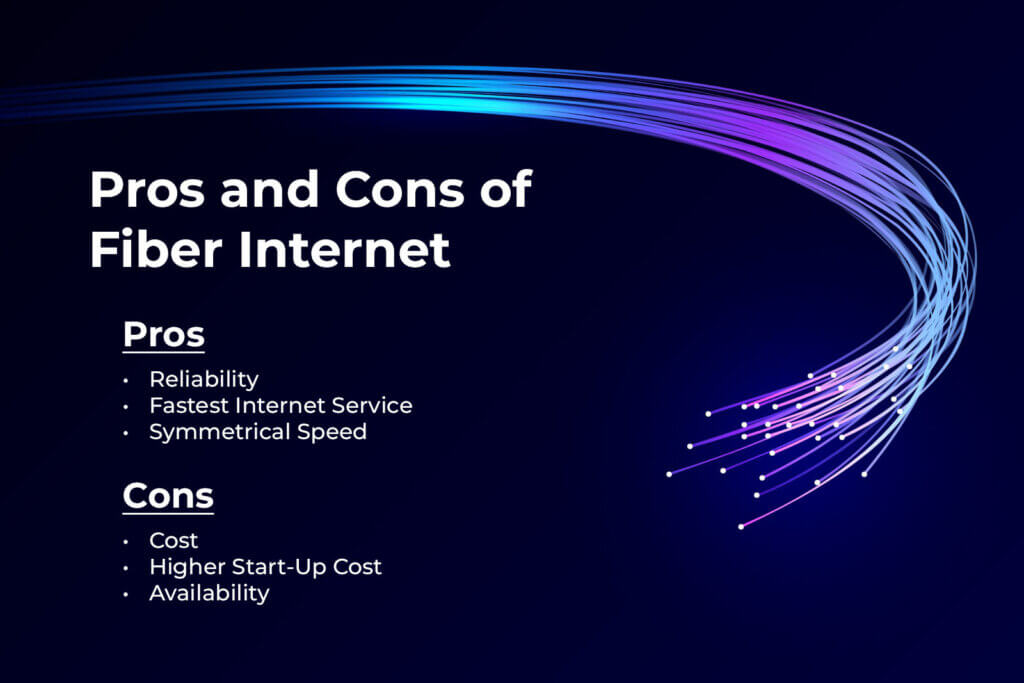Lower your internet bill
61% of people overpay for their internet.
Are you one of them?
Unlock exclusive offers in your area!
Call now
[tel]Enter zip code
1 Star is Poor & 5 Stars is Excellent.
* Required

Written by James Murray - Pub. Dec 29, 2021 / Updated Mar 18, 2024
Table of Contents
Are you happy with your Internet service?

About the author
Fiber Internet service is on the rise. A fiber Internet service surpasses DSL speeds with unmatchable velocity. And there are many Internet services available for you to choose from.
Today, Internet providers hope to make fiber optic connections available to all households. Fiber Internet is increasing in popularity and availability. But, there’s still a long way to go before fiber technology reaches all corners of the country.
This is why it’s important to contact providers in your area and see what their fiber availability is. There is no shortage of Internet options available. And most Internet providers can deliver a reliable connection. What sets fiber Internet apart is not its practicality. Fiber optic services give you high speeds with low latency.
If you’re shopping for a new Internet service provider, why not look for one that can give you a fiber optic service?
Fiber optic connections rely on fiber optic cables. These are thin cables made of glass whose job is to transfer data as light signals. Fiber technologies transcend DSL Internet options because of the speed of the service.
The material of the fiber optic cables allows data to travel at the speed of light. When available, fiber coverage is reliable and not susceptible to severe weather conditions.
A fiber connection can support much faster download and upload speeds than even the best Internet providers. Typical speeds reach up to 940 Mbps, compared to a DSL service which reaches maximum speeds of up to 100 Mbps.

Fiber Internet is still a new technology that’s yet to become available everywhere. Though there is a lack of fiber service in many states, most fiber Internet providers aim to expand. There are currently a handful of fiber Internet providers on the market. These include AT&T, Century Link, and Frontier.
Fiber Internet providers tend to conglomerate their services in select cities before expansion. Here are some areas of the country that have fiber availability.

There’s a good chance one of the providers listed above is available in your area. Now it’s time to check if your home is ready for the technology. By following a few easy steps, you can find out if your home is already wired for fiber.
For a fiber provider to install Internet access in your home, it requires an optical network terminal or ONT. The ONT is a box through which your fiber connection will go through to power your Wi-Fi network. Internet providers normally install the ONT inside or outside your home. Common areas of installation include your garage, basement, or closets.
When in doubt, never hesitate to call your Internet provider and request a technician. They can check your home and determine if your neighborhood is ready for the technology. Even if a fiber service is not available, the technician will provide you with information on when to expect expansion through the ISP.
If your current ISP doesn’t offer fiber, then try to find fiber providers that offer the technology where you live. Check with major providers that offer services in your area. This will help you find Internet providers that have a larger fiber network.

Fiber technology is the only Internet connection able to provide speeds unmatchable to cable Internet, satellite Internet, or other cable connections. The key characteristic that sets fiber apart from other Internet types is its ability to provide higher bandwidth. This is essential for fast data transmission and a symmetrical download speed.
Most Internet types available can only reach max speeds of 100 Mbps. Fiber is a service that can truly provide high-speed Internet ranging between 940 Mbps and 1,000 Mbps. These types of Internet speeds are possible because of fiber cables. They allow data to transmit as light over bundle strands of glass.
Unlike fiber, DSL service uses radio frequencies that travel through copper cables. This. makes the process slower and unable to reach the same Internet speeds as fiber. It’s the same for cable Internet and fixed wireless.

Users in all parts of the country, from Salt Lake City to Miami, have a strong preference for fiber Internet over fixed wireless. Although DSL providers try hard to compete for the popular vote, customers still prefer a fiber service when available.
AT&T fiber is one of the top providers of the technology. Customers continuously rate the service with 4.1 out of 5 stars, even though it’s not available in every zip code. The biggest selling point for fiber continues to be its Internet speed. Because download speeds are in the 1,000 Mbps range, customers prefer a fiber Internet connection over cable and DSL.
Cable and DSL modems and routers are not compatible with fiber Internet. It’s not that fiber requires a special modem per se.
Traditional routers that customers use for cable Internet are not able to transmit the light signals that fiber uses to keep you connected. Traditional routers work best with analog signals.
Fortunately for you, fiber providers include a new modem and router before installation. You will have the option to purchase or rent the equipment as part of your wired connection plan.
No. And that’s one of the things that make this type of technology so practical. There’s one exception to this rule and that is if a fiber to the node (FTTN) connection. These types of connections use a DSL connection from the node and into your home. Your Internet provider will provide you with everything necessary to install the service correctly.
If you live in an area where there is fiber Internet available, chances are there is a wide range of broadband availability. The differences between the three types of Internet are mainly in the way they deliver data. They also differ in their download speeds.
A DSL connection depends on a phone line to be able to establish a connection to the Internet. It’s also the slowest type of connection out of all three.
Cable Internet is the midpoint of the three. It’s similar to fiber in that it uses cables to transmit data. But, instead of using fiberglass, it uses coaxial cables. Here are some additional facts about each type of Internet.

No, not typically. Most fiber providers give you unlimited data. Fiber Internet is famous for its speeds. This is why providers try to prevent setting limits on data caps so that it doesn’t affect service. Fiber Internet providers offer customers the option for gigabit Internet plans. These allow you to experience speeds of 1000 Mbps.
Google fiber is yet another way of obtaining access to fiber technologies. Although it’s less popular than other Internet service providers, it operates in 18 cities across the United States.
It’s popular with customers because they don’t charge for installation and have unlimited data caps. They also offer fiber TV and home phone services.
Remember that fiber is an emerging technology still making its way through the United States. Although fiber is more popular and technologically advanced in other countries, it doesn’t mean that it’s not progressing in the United States. In the next few years, experts expect a broader expansion of the service and faster Internet speeds for everyone.

About the author
Congratulations, you qualify for deals on internet plans.
Speak with our specialists to access all local discounts and limited time offers in your area.
[tel]61% of people overpay for their internet.
Are you one of them?
Unlock exclusive offers in your area!
Call now
[tel]Enter zip code